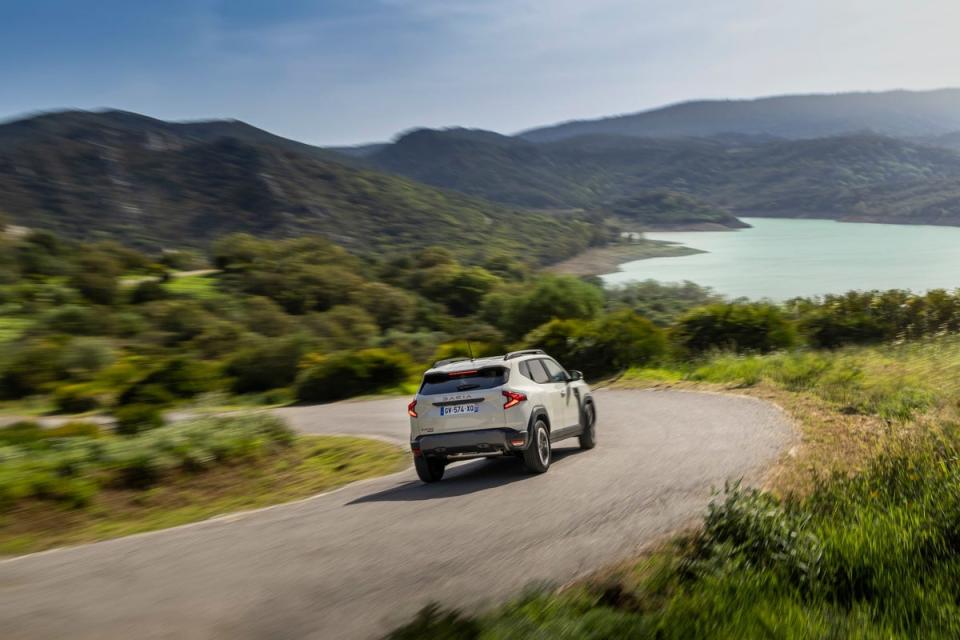Dacia’s well-liked Duster sports utility gets a useful makeover

Dacia has sold 2.4 million Duster sports utilities, so the latest one is not going to muck about with a new winning formula.
This third-generation car is more than just a mid-life facelift however, boasting an all-new body, which commendably is little bigger on the outside, but claimed to offer more space for people and their chattels within.
So, the Duster’s sturdy Tonka Toy profile remains in a more Cubist form. Dacia is keen to flag up the fact that 20 per cent of the car’s plastic parts are now made from a patented recycled material with the curious and slightly comedic name of ‘Starkle.’ Plastic wheel arches and side rubbing strips are examples of this stuff.
Inside story

The reconstituted Duster’s interior is typical of the Romanian brand, in that the materials used are practical and easy to clean. Hard plastics are employed for things like the dashboard and door panels, and even if these aren’t tactile delights, they feel solid and chime in with Dacia’s value-for-money credo. Likewise, the seat fabric, which is not soft to the touch, but would doubtless scrub up well after encountering a chocolate-imbibing child or a moulting dog. The Duster’s interior is young-family friendly.
The seats themselves are soft and comfortable, although one 6ft 2inch tall car journalist complained of a lack of thigh support when sitting in the front. Headroom is generally good front and rear, but as with the outgoing Duster, back seat legroom for grown-ups could perhaps be a little more generous, but it’s perfectly adequate for most. The boot is expansive, with up to 1,545 litres of space when the rear seats are folded down, in the Hybrid 140 we tried.
Easy going

The Duster’s controls, instruments and touch screen are simple to master. The latter, in particular, doesn’t confuse with an endless suite of options and sub options, which surely makes for safer driving, as the Duster’s pilot can concentrate on the road.
Speaking of which, this car is a thoroughly pleasant thing to drive, handling neatly and accurately and rolling less than its height might imply. These characteristics are topped off with a pliant, comfortable ride.
Mechanical refinement is mostly good, although the hybrid’s petrol engine can sometimes sound a bit busy during hard acceleration. Its bluff shape means that at speed there’s some wind roar - perhaps a little more than in the car it replaces - but most people will barely notice this.

Performance? On paper a 10 second 0-62 mph might sound fairly leisurely, but in real world conditions the car is perfectly sprightly.
Straightforward
The choice of Duster derivatives is refreshingly simple. There are four trim levels, a range of petrol engines including one that also runs on liquid petroleum gas, and a couple of petrol/electric hybrids, although as yet without a plug-in option. You can choose between manual and self-shifting transmissions and two and four-wheel-drive versions. The latter has five driving modes and genuine off-road ability.
Gear selection
In Britain, all but 10 per cent of the Dusters driving around are bought by private owners spending their own money, and most (around 70 per cent) go for plusher versions with more kit.

The car we tried was in Journey spec, which meant standard equipment included cruise control fog lights, automatic air conditioning, hands-free key card, electric parking brake, wireless smartphone charger, infotainment system with connected navigation, and a sound system with six speakers. A decent selection of active and passive safety systems also feature.

Genuine article
The Duster’s essential honesty has always made it a likeable car, and the new one has a similar character, which it mixes with some useful design and specification upgrades. British deliveries are likely to start in the third quarter of 2024 (think September), and prices have yet to be announced, but you can expect them to hover round the £18-£20k mark.
Whatever the final price, it will pay for decently engineered and equipped, easy to use transport.
The Facts
Dacia Duster Hybrid 140 Journey
0-62mph: 10.1 sec
Top speed: 99.4 mph
Estimated combined fuel consumption: 62mpg
CO2 emissions: 113g/km
Price: TBC
On sale in September


